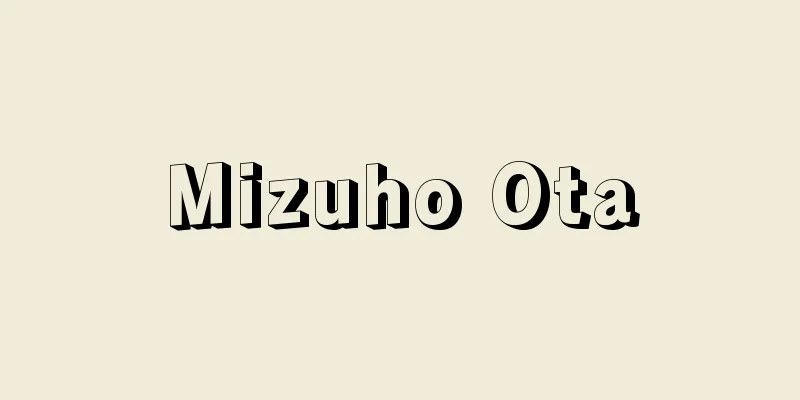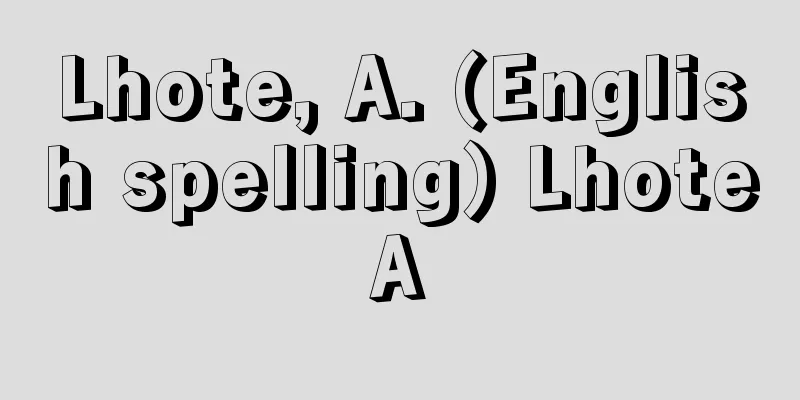Mizuho Ota

|
Poet. Born in Nagano Prefecture on December 9, 1876. His real name was Teiichi. His alias was Mizuhonoya. He graduated from Nagano Normal School. In 1900 (Meiji 33), he formed the Konohana Society in Matsumoto and started the Shinpa waka movement. He published his first collection of poems, Tsuyukusa, in 1902 and Sanjo Kojo (co-authored with Shimaki Akahiko), in 1905, and passed the ethics section of the Ministry of Education Teacher Certification Examination. In 1908, he moved to Tokyo and worked as a professor of ethics at the Japan Dental College (now Japan Dental University), while also working as a critic. In 1912, he married Shiga Mitsuko. In 1915 (Taisho 4), he launched the poetry magazine Choon. In 1945, he founded the Basho Study Group together with Koda Rohan, Abe Jiro, Abe Yoshishige, and Nunami Keion, and reclaimed Basho's influence in tanka as an extension of the Shin Kokin Wakashū. At the end of the Taisho and early Showa periods, he opposed Araragi's sketchism and the emerging proletarian tanka by advocating "Japanese symbolism," and established a unique foothold in modern tanka. In 1948 (Showa 23), he became a member of the Japan Art Academy. He passed away on January 1, 1955. He wrote nine collections of tanka poems, including "Uncho" (1922), "Winter Greens" (1927), "Sagiu" (1933), and "Raden" (1940), as well as many critical and research books, including "Tanka Tachigen" (1921), "The Fundamental Problems of Basho's Haikai" (1926), "A Fundamental Commentary on Basho's Renku" (1930), "Dawn of the Gods" (1940), "A Study of the History of Japanese Waka Poetry: Medieval Period" (1949) and "The same in the Ancient Period" (1954). [Ota Seikyu] From the bottom of the peony flowers of Hakuo, I can hear the sound of the rising tide. "The Complete Works of Ota Mizuho, 10 volumes (1955-59, Kondo Shoten)" ▽ "Japanese Poetry 7: Ota Mizuho and Other Works" (1969, Chuokoron-Shinsha) [Reference] |Source: Shogakukan Encyclopedia Nipponica About Encyclopedia Nipponica Information | Legend |
|
歌人。明治9年12月9日長野県生まれ。本名貞一(ていいち)。別号みづほのや。長野師範学校卒業。1900年(明治33)「この花会」を松本で結成し、新派和歌運動に着手、02年処女歌集『つゆ草』、05年『山上湖上』(島木赤彦と合著)を出版ののち、文部省教員検定試験倫理科に合格。08年上京、日本歯科医専(現日本歯科大学)倫理科教授のかたわら、評論家として活躍。09年四賀光子(しがみつこ)と結婚。15年(大正4)歌誌『潮音(ちょうおん)』創刊。20年幸田露伴(こうだろはん)、阿部(あべ)次郎、安倍能成(あべよししげ)、沼波瓊音(ぬなみけいおん)らと芭蕉(ばしょう)研究会をおこし、『新古今和歌集』の発展としての芭蕉を短歌に奪回して、大正末、昭和初期にアララギの写生主義、新興無産派短歌に対立して「日本的象徴」を標榜(ひょうぼう)、近代短歌に独特の地歩を確立した。48年(昭和23)芸術院会員。昭和30年1月1日没。『雲鳥(うんちょう)』(1922)、『冬菜』(1927)、『鷺鵜(さぎう)』(1933)、『螺鈿(らでん)』(1940)など9冊の歌集と、『短歌立言』(1921)、『芭蕉俳諧(はいかい)の根本問題』(1926)、『芭蕉連句の根本解説』(1930)、『神々の夜明』(1940)、『日本和歌史論中世篇(へん)』(1949)、『同上代篇』(1954)ほか多くの評論研究書がある。 [太田青丘] 白王(はくおう)の牡丹(ぼたん)の花の底ひより湧(わ)きあがりくる潮の音きこゆ 『『太田水穂全集』全10巻(1955~59・近藤書店)』▽『『日本の詩歌7 太田水穂他集』(1969・中央公論社)』 [参照項目] |出典 小学館 日本大百科全書(ニッポニカ)日本大百科全書(ニッポニカ)について 情報 | 凡例 |
Recommend
Kibunegiku - Kibunegiku
→Anemone Source : Heibonsha Encyclopedia About MyP...
Tarsaticum
…The country's largest seaport, located at th...
The Pessimist and the Woman
…In 1989, he wrote Japan's first full-length ...
Nishie - Success
The name of the main stream of the Pearl River sy...
Research Institute - Research Institute
A research institute is an organization whose purp...
Takeno [town] - Takeno
A former town in Kinosaki County in northern Hyogo...
School Hygiene
〘Noun〙 = gakko hoken (school health) ※Detailed exp...
Autumn Melody
A song accompanied by koto and shakuhachi. Compose...
Gozan-sama - Good day
A general term for the style of calligraphy writte...
Gomorrah
...It was located in the plains of the Jordan, an...
Contempt of Congress
…In the UK, the House of Commons (lower house), a...
Exile from Edo - Edojuri Shiho Tsuiho
〘 noun 〙 A type of banishment punishment in the Ed...
Phong Saly
The capital of the province of the same name, in t...
Oregon
...A ship whose main purpose is to transport pass...
Meiji Newspaper and Magazine Library
It belongs to the Faculty of Law at the University...









